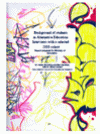This report presents the findings from a research project carried out in 2008 on the educational histories and pathways of alternative education (A.E.) students in New Zealand.
Purpose
The focus of this research was to document the "voices" of alternative education students, because there is no research in New Zealand that records their points of view about their educational experiences. The students’ stories capture four main aspects of their lives and educational experiences:
- How students have experienced learning in their schooling so far;
- The nature of their educational and social experiences in A.E. centres;
- The impact of their health, friends, and family life experiences on their learning; and
- What students consider to be their strengths, and aspirations for the future.
Key Results
- All of the students (100%) interviewed at the AE centres in our study, told us that they enjoyed being at AE and 95% said they enjoyed learning again, since attending AE.
- Most students (75%) had become disengaged with learning at secondary school (most in their first year). Many had been seriously disengaged.
- A minority of students (25%) had begun to disengage at intermediate school.
- The main reasons for disengagement at the secondary school level appeared to be firstly that students reported teachers as not knowing them or developing effective relationships with them, and secondly because there appeared to be a mismatch between their levels of achievement and teaching levels. In all cases where students identified the mismatch, the level at which teachers were teaching was too high.
- Many of the young people were aware of their learning needs and were proactive in asking teachers for support, but reported not receiving it.
- The study points to an ‘engagement’ gap appearing well before secondary schools become aware of students’ lack of presence (extended truancy).
- The one-to-one help they were receiving from the AE tutors was helping them re-establish their confidence in their ability to learn and increasing their optimism and beliefs about their future.
- Almost all students had enjoyed learning at primary school and had achieved reasonably well there.
- Many students with learning delay or behavioural disorders believed that they had received effective interventions at primary school. However, their difficulties were such that curriculum adaption was likely to be required throughout their schooling for them to remain engaged and successful learners. This appeared not to be happening after primary school.
- Several students who received counselling help at mainstream schools had found this to be unhelpful. Counselling without attention to the school factors that create or exacerbate learning problems is unlikely to be successful.
- Most of these students have experienced problems in their family lives (violence, drugs and alcohol, gang connections, disorganisations and disruption, CYFs interventions, poverty, sexual abuse, etc).
- Some students described more ‘normal’ family circumstances, but identified peer pressure (including gang involvement) as the reason for getting into trouble.
- Most students demonstrated great strength and resilience in negotiating their personal circumstances, and now that they were with AE tutors who worked with them as people first, and learners secondly, they described how they have turned their previously negative attitudes around.
- Once students join alternative education there appear to be limited processes and structures for them to return to mainstream secondary schools. They appear to be "lost to the system" and there are inherent inequities in having a separate system rather than investing in developing the capacity of secondary schools to teach all of their students successfully. Having a separate system, while providing a lifeline for disengaged students, adds nothing to the capacity of schools to learn more effective ways of engaging challenging students.
- AE appears to be successful in restoring these young people’s sense of self-confidence and belonging, but this study provides little evidence that students in AE are leaving with the qualifications they require to be successful in the next stage of their lives. For 61% of the students, their AE centres were not sufficiently resourced to provide the catch-up learning they believed they needed.

